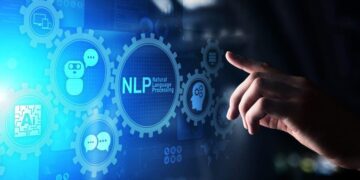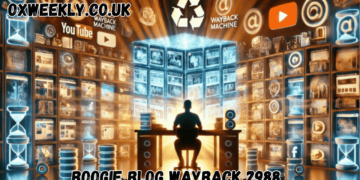Natural Language Processing (NLP) has rapidly evolved over the past few years, finding applications in various fields such as healthcare, finance, customer service, and many more. As we look towards 2025 and beyond, several emerging trends are set to shape the future of NLP, driving innovations and enhancing the capabilities of AI systems. This article explores these trends and their implications, as well as the role of AI development companies in this evolution.
Understanding Natural Language Processing
What is Natural Language Processing?
Natural Language Processing is a branch of artificial intelligence that focuses on the interaction between computers and human language. It involves the ability of machines to understand, interpret, and respond to human language in a manner that is both meaningful and useful. NLP encompasses various techniques, including text analysis, sentiment analysis, machine translation, and more.
The Importance of NLP
NLP is vital for enabling machines to interact with humans in a natural and intuitive way. As businesses and consumers increasingly rely on digital communication, NLP tools are essential for automating tasks, enhancing customer experiences, and extracting valuable insights from unstructured data.
Current State of NLP
Before diving into emerging trends, it’s essential to understand the current state of NLP. Today, NLP technologies are widely used in applications such as:
- Chatbots and Virtual Assistants: AI-driven chatbots are employed for customer service, providing instant responses to inquiries and automating routine tasks.
- Sentiment Analysis: Businesses use sentiment analysis to gauge customer opinions and feedback from social media and reviews.
- Machine Translation: NLP is pivotal in translating text between languages, enabling global communication.
- Content Generation: Tools are available that can generate human-like text for various purposes, from marketing content to news articles.
While these applications are already impactful, the future promises even more transformative changes.
Emerging Trends in NLP for 2025 and Beyond
1. Advancements in Deep Learning Techniques
Deep learning has been a significant driver of NLP advancements. As we move toward 2025, we can expect further innovations in deep learning architectures, particularly with transformer models.
Key Developments
- Larger and More Efficient Models: Model sizes are expected to grow, with architectures becoming more efficient. Techniques such as model pruning and quantization will help optimize performance while reducing computational costs.
- Few-Shot and Zero-Shot Learning: These techniques allow models to generalize from fewer examples, making it easier to adapt to new tasks without extensive retraining.
2. Increased Focus on Multimodal NLP
The integration of multiple data types—text, audio, images, and video—into NLP systems is gaining traction. Multimodal NLP enables a more holistic understanding of context and meaning.
Implications
- Rich Contextual Understanding: By combining text with other modalities, systems can grasp context more effectively, leading to more accurate interpretations.
- Enhanced User Interactions: Users will be able to communicate with systems using various inputs, such as voice commands and gestures, creating a more intuitive experience.
3. Ethical Considerations and Bias Mitigation
As NLP technologies become more pervasive, ethical considerations will take center stage. Addressing bias in NLP models will be crucial for ensuring fair and equitable outcomes.
Strategies for Improvement
- Bias Detection and Correction: AI development companies will need to invest in tools and methodologies for identifying and mitigating bias in training datasets.
- Transparency and Accountability: Developing transparent models that can explain their reasoning and decisions will be essential for building trust with users.
4. Enhanced Personalization
Personalization is becoming increasingly important in user experience. NLP technologies will evolve to provide tailored experiences based on individual preferences and behaviors.
Applications
- Smart Recommendations: Systems will analyze user interactions to offer customized content and product recommendations.
- Dynamic Conversational Agents: Chatbots will learn from previous interactions to adapt their responses to individual users, making conversations feel more personal and relevant.
5. Expansion of Enterprise AI Chatbot Development
The rise of Enterprise AI Chatbot Development will continue, driven by the need for efficient customer service and streamlined business processes.
Key Features
- Integration with Business Systems: Future chatbots will seamlessly integrate with enterprise systems, such as CRM and ERP, to provide real-time data and insights.
- Advanced Conversational Capabilities: Enhanced NLP algorithms will allow chatbots to handle more complex inquiries, manage multi-turn conversations, and understand context better.
6. Conversational AI and Human-Like Interactions
As NLP technologies advance, conversational AI will become increasingly sophisticated, enabling more human-like interactions.
Trends to Watch
- Emotion Recognition: NLP systems will be able to detect emotional cues in text and voice, allowing for more empathetic interactions.
- Contextual Awareness: Systems will retain context over longer conversations, enabling more coherent and relevant dialogue.
7. Integration with IoT and Smart Devices
The Internet of Things (IoT) is growing, and the integration of NLP with smart devices will enhance user interactions.
Use Cases
- Voice-Controlled Assistants: Users will interact with smart home devices using natural language commands, making technology more accessible.
- Data Insights from IoT Devices: NLP can analyze data from IoT sensors, turning raw data into actionable insights for users.
8. Continuous Learning and Adaptability
NLP systems will increasingly incorporate continuous learning capabilities, allowing them to adapt based on new data and user interactions.
Benefits
- Real-Time Updates: Systems will learn and improve in real-time, enhancing their accuracy and relevance.
- Reduced Need for Manual Updates: Continuous learning will minimize the need for frequent retraining, making systems more efficient.
9. Collaborative Human-AI Interaction
The future of NLP will involve collaborative interactions between humans and AI, where both parties contribute to problem-solving.
Implications
- Augmented Decision-Making: NLP systems will assist professionals in decision-making processes by providing relevant information and insights.
- Enhanced Creativity: Creative industries will leverage NLP to brainstorm ideas, generate content, and collaborate with AI in innovative ways.
10. Language Diversity and Inclusivity
As NLP technologies evolve, addressing language diversity and inclusivity will be a significant focus.
Considerations
- Support for Low-Resource Languages: Efforts will be made to develop NLP models for underrepresented languages, ensuring broader accessibility.
- Cultural Sensitivity: NLP systems will be designed to understand and respect cultural nuances and variations in language use.
The Role of AI Development Companies
Why Partner with an AI Development Company?
As businesses look to implement NLP solutions, collaborating with an AI development company can provide the expertise and resources needed for successful deployment.
Advantages of Collaboration
- Specialized Knowledge: AI development companies possess in-depth knowledge of NLP technologies and can create tailored solutions that meet specific business needs.
- Access to Advanced Tools: These companies have access to the latest tools and technologies, ensuring businesses can leverage cutting-edge NLP capabilities.
- Scalability: AI development companies can design scalable solutions that grow with the business, accommodating increasing data volumes and complexity.
How AI Development Companies Facilitate NLP Trends
- Custom NLP Solutions: Companies can develop custom NLP solutions that align with emerging trends, ensuring businesses stay competitive.
- Training and Support: AI development companies provide ongoing training and support, helping organizations adapt to new technologies and methodologies.
- Ethical AI Practices: By emphasizing ethical AI practices, these companies can help organizations navigate the complexities of bias mitigation and transparency.
Final Take
As we approach 2025 and beyond, natural language processing is poised to undergo significant transformations, driven by advancements in technology, increased demand for personalized experiences, and a focus on ethical considerations. Understanding these emerging trends will be crucial for businesses looking to harness the power of NLP to enhance their operations and customer interactions.
From advancements in deep learning techniques to the growing importance of multimodal NLP, the future holds exciting possibilities for this field. By partnering with AI development companies and leveraging their expertise in natural language processing services, organizations can position themselves at the forefront of this evolution, ensuring they remain competitive in an increasingly digital landscape.
In summary, the potential of NLP is vast, and its continued evolution will reshape industries, improve user experiences, and facilitate meaningful interactions between humans and machines. Embracing these trends will not only enhance operational efficiency but also drive innovation and foster a more connected world.

































